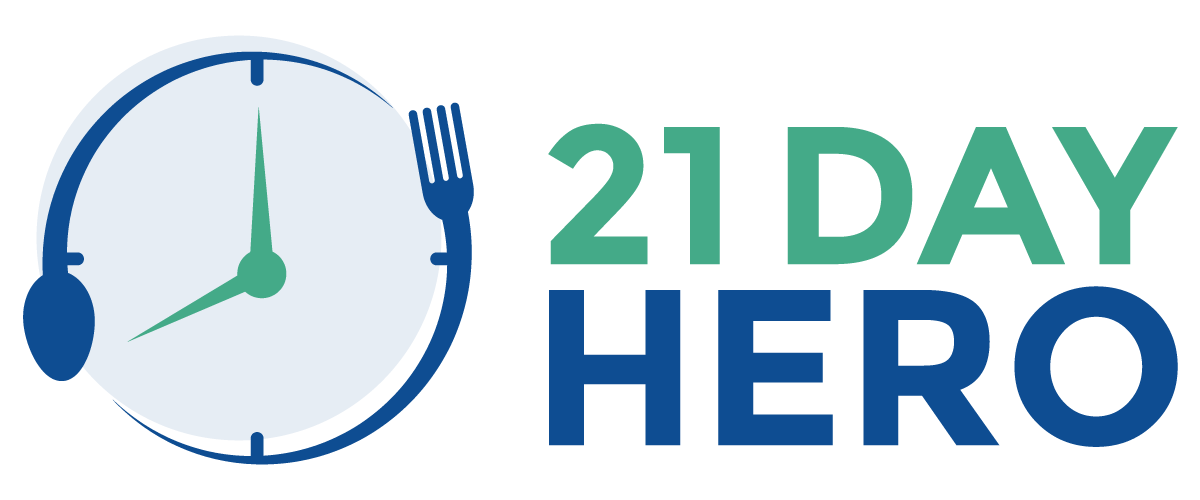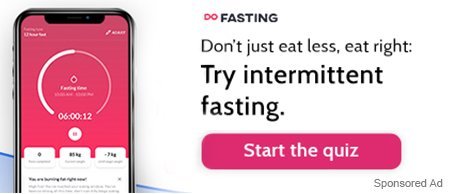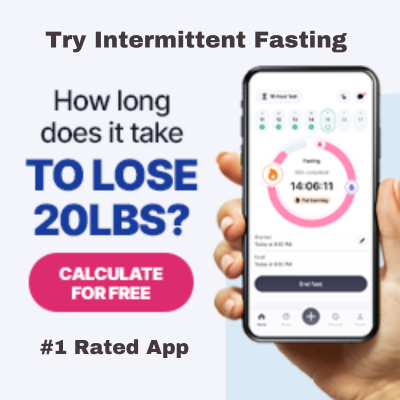Types of Fasting | 5-Day Fasting Diet Meal Plan
Fasting has been practiced for thousands of years, yet recently it has become a popular way to lose weight and improve health. Traditionally, fasting is a period of time with calorie restriction or completely avoiding food. Now, there are actually a variety of ways to fast beyond what some would consider traditional fasting.
Many find that a period without any food at all can be quite challenging. Fast days are often filled with low energy and constant nagging hunger. Some may find that things like herbal teas and black coffee can help curb the hunger pangs for a short while, but ultimately cannot forgo food for their desired time frame.
The good news is that there are other ways to fast besides the traditional way to fast. You may have heard of fasts such as Intermittent Fasting, water fasting, or even the fasting mimicking diet. Each of these types of fasts offer an alternative to traditional fasting.
While it’s always a good idea to consult a medical professional before starting any type of fast, you may see yourself finding success at one of these types of fasts. Once you have decided on the right fast for you, you may find yourself thinking “What should I eat?”
In this article, we will explore the different types of fasts and answer the question “What should I eat?”. We will provide a sample meal plan guide for each fasting type as well as a calorie count as a guide to start your fast. Let’s dive in!

Types of Fasting
Intermittent Fasting
By far, the most popular type of fasting in recent years has been Intermittent Fasting. Besides helping many lose body weight, Intermittent Fasting also has been shown to reduce cardiovascular disease risk factors such as high blood pressure. Studies have also shown the positive effects that Intermittent Fasting has on diabetes risk factors as well and can even significantly lower blood sugar levels and insulin-like growth factor.
With these benefits and more, Intermittent Fasting is appealing to many people. But, what exactly is Intermittent Fasting? Unlike traditional diets that tell you what you can and cannot eat, Intermittent Fasting is a schedule of WHEN to eat, not WHAT to eat.
By limiting the hours during which you are consuming calories, you will consume fewer calories which can result in fat loss. Depending on which type of Intermittent Fasting you practice, there are specified hours or days of the week during which you are in a fasting window. The period of time that you eat is called your eating window.
There are many types of Intermittent Fasting that can fit with your schedule and lifestyle. Additionally, you can choose your fasting and eating windows during particular times of the day that work for you.
For example, some choose the majority of their fasting hours to be overnight and even extend into the morning so the first meal of the day is lunch. But, if you would rather have your eating window at the start of each day, you could start your fasting window in the late afternoon.
A great way to begin Intermittent Fasting is through the 16:8 type where you fast for 16 hours and eat during an 8 hour period. This coincides with many people’s natural eating pattern and makes for a smooth transition into fasting.
Let’s look at a few different types of Intermittent Fasting that we will focus on for our meal plan guide:
- 16:8– As mentioned above, this is a great option for anyone, but especially those new to Intermittent Fasting. The fasting and eating hours align with most people’s natural circadian rhythm. It’s also a great way to avoid late night snacking which can contribute to weight gain and belly fat.
- 5:2– This type of Intermittent Fasting focuses on fasting days instead of certain hours within a day. With the 5:2 eating plan, you eat normally for 5 days out of the week and then eat about 25% of normal calories during the other 2 days. This usually means around 500-600 calories for most people on the fasting days.
- Alternate Day Fasting– This one is similar to 5:2 fasting, but you eat normally for one day and then the next day is a fasting day. Some choose to completely restrict calorie intake and others choose to consume 25% of normal calorie intake. Those that completely restrict calories on fasting days often will consume beverages such as herbal teas or black coffee which do not contain significant calories. Alternate Day Fasting can be beneficial for those that have a hard time fasting for consecutive days.
So what does an Intermittent Fasting diet look like?
While there aren’t specific guidelines on what to eat while Intermittent Fasting, a healthy diet is encouraged. This means that it is still important to have a diet plan or a plan of what you will eat during your eating window.
It’s important to be aware of your calorie intake, at least in the beginning, to ensure that you aren’t overeating but also that you consume enough calories. It’s beneficial to consult a dietitian if you are unsure how many calories you need to consume for your energy needs and health goals.
One of the benefits of Intermittent Fasting is that it can be combined with other diets. For example, some may want to follow a keto diet but still reap the benefits of fasting. The keto diet works well with Intermittent Fasting since Intermittent Fasting is a schedule of when to eat, not what you can eat. If you are familiar with the keto diet, then you know that it greatly reduces the amount of carbohydrates consumed which causes the body to go into a state of ketosis. Most of your calories are consumed from healthy fats such as coconut oil, avocado, and nuts.
Fasting Mimicking Diet
Another popular type of fasting is the Fasting Mimicking Diet, also known as the Longevity diet. This diet encourages a restricted calorie intake for 5 days with specific ratios of protein, fats, and carbohydrates. There are also certain foods that are recommended such as olives, nuts, soups, herbal teas and kale crackers.
This diet plan was created by Dr. Valter Longo, a researcher and professor who specializes in healthy aging. His research supports that this diet plan mimics the same effects that traditional fasting has on the body. One study shows that following the Fasting Mimicking Diet not only helps with weight loss and reducing body weight, but it could also prevent cardiovascular disease and diabetes.

5-Day Fasting Diet Meal Plan
As mentioned earlier, there are many ways to do a 5-day fast. Whether you are trying a fast to encourage lean body mass or for other health benefits, a great way to set yourself up for success is with a solid eating plan. It can be challenging to know exactly what you should be eating while on your 5-day fast.
While there is some variation on what you can eat depending on what fasting type you choose, it’s generally a good idea to choose nutrient dense foods such as fruits, vegetables, lean protein, healthy fats, and whole grains to ensure nutrient needs are met. The first day of a fast can often be the most challenging, so you may want to try one of the sample days below as your first day to get you started on the right foot.
For this fasting diet meal plan, we’ll highlight a sample day of some of the different types of fasting discussed in this article. It’s always a good idea to consult a healthcare professional for medical advice on whether fasting is safe for you, especially if you have certain medical conditions.
The following meal plans are designed to be general guides and are based on a typical 2000 calorie diet. Calorie requirements can vary based on individual needs. Continue to drink plenty of fluids such as water and herbal teas during your fast.
Sample Day on Alternate Day Fasting
With Alternate Day Fasting, you eat normally one day without any calorie restriction. The next day you consume 25% of your normal calories. For this example, there are 500 calories allotted to the fasting day which is 25% of 2000 calories. Here is what a sample day might look like:
- Breakfast (159 kcal)- ⅔ cup nonfat Greek yogurt + raspberries
- Lunch (147 kcal)- 1 serving of Chickpea Avocado Salad
- Dinner (235 kcal) – 3 oz grilled salmon seasoned with lemon + ½ cup roasted broccoli
Sample Day on 5:2 Intermittent Fasting
Similar to Alternate Day fasting, for 5 days out of the week you eat your normal amount of calories. It’s still a good idea to choose nutrient dense foods during this time.
Two days out of the week will be your fasting days where you consume about 25% of your normal calories. Again, in this example we have 500 calories allotted to our fasting days.
- Breakfast (152 kcal)- 1 scrambled egg + 1 medium orange
- Lunch (180 kcal) – 3 oz baked chicken breast + ½ cup roasted carrots
- Dinner (219 kcal)- 1 serving of Vegetarian Burrito Bowl
Sample Day on 16:8 Intermittent Fasting
Since 16:8 Intermittent Fasting doesn’t restrict calories, we will base our sample day off of 2000 calories. Your eating window will be 8 hours, so make sure you fit your food within this time frame.
Whenever you are coming off of your fasting period, it’s important that your first meal is both satisfying and full of healthy nutrients.
- Breakfast (382 kcal)- 1 cup oatmeal, 2 tbsp almond butter, ½ cup blueberries
- Snack (287 kcal)- 1 hard-boiled egg + ¼ cup mixed nuts
- Lunch (489 kcal)- 1 serving of Roasted Chickpea Wraps
- Snack (250 kcal) – ½ cup cottage cheese + peaches
- Dinner (670 kcal)- 2 servings of Chicken and Spinach Skillet Pasta
Sample Day on Fasting Mimicking Diet (Longevity Diet)
The Fasting Mimicking Diet does vary in calorie amounts depending on which day you are on. For example, the first day of the diet restricts calories to 1090 kcal and days 2-5 restricts calories to 725 kcals. For this example, we will use total calories for the day at 725 kcals.
- Breakfast (219 kcal)- Smoothie (spinach, avocado, banana, blueberries, unsweetened almond milk) + omega 3 supplement
- Lunch (306 kcal)- 1 serving of Quinoa Avocado Salad
- Dinner (165 kcal)- Split pea soup + 5 whole grain crackers

Conclusion
Whether Intermittent Fasting or trying the Fasting Mimicking Diet, there are many ways to reap the benefits of fasting. Even if you have not had success in the past with fasting, a 5-day fast with one of the fasts mentioned above is a good place to start.
Just as important as choosing the right type of fast, knowing which foods to eat will also set you up for a successful fast. This sample meal plan guide can help you get started with exactly what to eat on your fast and help you reach your health goals!
Intermittent fasting is always an amazing way to feel great, and lose weight, incorporate it as part of your daily fasting plan.












